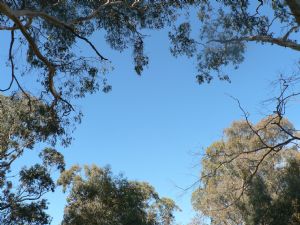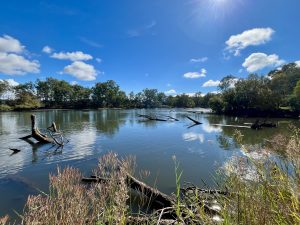Our ‘Planting in a Warming World’ forum last year gave us some insight into what we can expect locally by 2050.
The climate in Albury-Wodonga will be more like that of Forbes in NSW, with
- Fewer frosts, less snow and more heat waves, days of 40°C twice as common and heat waves lasting longer.
- Intense storms in summer dumping more summer rainfall, but less rain falling in winter and spring, and less rain overall.
The changing climate is also reshaping nature, particularly by changing the local mix of plants and animals. As stresses like heatwaves, dryer landscapes and increased fire cause some plant species to decline and different ones to take their place, habitats are being altered to suit some animals but not others.
The environment we know and love now; the species of plants, insects, birds, reptiles and mammals we are accustomed to living amongst, will change, and in unpredictable ways.
Over the coming weeks we are looking at what we can all do in our backyards, farms, urban parks and bush reserves to help nature adapt and mitigate the local effects of climate change.
One consideration is the movement of trees. Some of our iconic local Eucalypt species like red box, yellow box and red stringybark will have difficulty surviving and reproducing here in the new climate; their natural range will shift. But the ability of trees to move across the landscape to more suitable areas is obviously limited, and would normally take hundreds of years. We need to help.
So what can we be planting, here and now, to ensure we have mature and reproducing trees in our landscape in 2050? We can look to hotter, drier places like Forbes, see what native species are thriving there now, collect and propagate seed from those trees and plant here.
Species of choice might include red ironbark, grey box, white cypress pine, white box, kurrajong, drooping sheoak, and river red gum, depending on the circumstances. We will need to plant and observe carefully to avoid creating new environmental weeds.
More on the topic of ‘climate ready’ planting can be found on the VicNature2050 website – highly recommended for inspiration. Local inspiration can be found in Gardens for Wildlife Albury Wodonga’s 2020 Gardening in a Warming Climate workshop notes.






